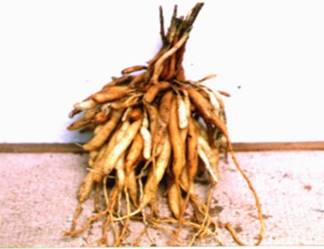India has a rich biodiversity of mammals 7.6%; Birds 12.6%; amphibians 4.4%; reptiles 6.2%; fishes 11.7% and flowering plants 6%. Out of the 34 biodiversity hotspots 2 hot spots are completely embedded in the boundaries of the Western Ghats and the Eastern Himalayas. While the 3rd hot spot of Indo-Burma lies partially in India and partially in Burma.
For the farming community, Monoculture farming gets very risky because if the particular crop fails because of one or other reason the farmer loses all his investment. Therefore to make farming sustainable it should be more resilient to environmental perturbations. Therefore CSV promotes multi-tiered farming by introducing more than 100 lesser-known plant species as crops, in a phased manner.
Some of the representative species are listed below:
- Herbs: Ambadi or Hibiscus sabdariffa; Tarota or Cassia tora
- Small trees: Sinduri or Bixa orellana; Charoli or Buchanania lanzan; Bhokar or
Cordia rothii; Salai or Boswellia serrata etc.

- Big trees: Mahua – Madhuca indica; Palms – Phoenix sylvestris
- Twines: Rivea hypocrateriformis (Phand or Midnapur Creeper)
Asparagus racemosus (Shatavari); Cucumis momordica (Phot or Snap Melon) etc.
- Lianas: Ragat Puda – Ventilago denticulata
- Tubers: Lesser yams – Yams or Dioscorea alata, Bulbifera; Bhui Kohada or
- Patal Kumhada or Indian Kudzu – Pueraria tuberose
- Grassess : Apluda mutica For fodder, Cymopogonmartinii for essential oil and Den drocalamus strictus for construction material
Grass
The role of grasses is of paramound importance in the field of cover management. Basically it provides an extensive cover to the degraded and open soil and is utilized as fodder. In the Karla project because of fending of the field the productivity level of weeds and grasses rose from 09.7 tonnes per hectare in eroded and over grazed land to 8.2T/hect. in eroded but protected 17.3T/hect. in non-eroded organically rich soil. The productivity level of cultivated firle was 25.7T because of addition of 10T of compost per hectare.
